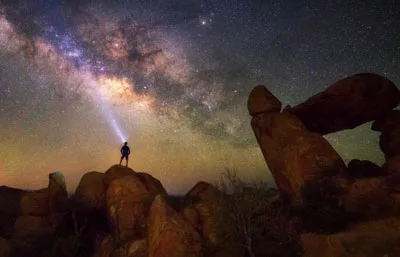The Paradox of Exploration: Stargazing Before Earthbound Discovery
Since the dawn of humanity, the night sky has captivated our imagination. Long before we charted the depths of our oceans or scaled the highest peaks, ancient civilizations were meticulously mapping the stars. This curious inversion—looking outward to the cosmos before fully understanding our own planet—reveals a profound truth: sometimes, what’s closest to us is the hardest to see.

The Allure of the Stars
The earliest star maps date back thousands of years. The Sumerians, around 3000 BCE, etched constellations onto clay tablets, while ancient Egyptians aligned their pyramids with celestial bodies. By the 2nd century, Ptolemy’s Almagest cataloged over a thousand stars, laying the groundwork for astronomy. These efforts required no telescopes, only keen observation and a drive to understand the heavens. Meanwhile, vast swathes of Earth—dense jungles, uncharted seas, and remote mountains—remained mysteries.
Why did humans prioritize the distant stars over their immediate surroundings? The answer lies in the sky’s accessibility. Unlike treacherous terrains or stormy oceans, the cosmos was always there, visible to anyone who looked up. Its patterns were predictable, offering a sense of order in a chaotic world. Stars guided navigation, marked seasons, and inspired myths, making them both practical and spiritual touchstones.

The Hidden Earth
In contrast, exploring Earth was a daunting task. Early humans faced physical barriers—raging rivers, impassable deserts, and towering ranges like the Himalayas. Even as late as the 19th century, vast regions like Antarctica and the Amazon remained largely unknown. The tools and technologies needed to probe these frontiers, such as ships, compasses, or oxygen tanks, took centuries to develop. The stars, however, required only patience and a clear night.
This paradox mirrors a deeper human tendency: we often overlook what’s familiar. The landscapes we inhabit daily blend into the background, while the distant and unattainable spark curiosity. The stars, unreachable yet ever-present, became a canvas for our questions about existence, while the Earth’s mysteries demanded risk and effort to uncover.

Lessons from the Cosmos
The preference for stargazing over terrestrial exploration teaches us about perspective. The cosmos, with its vastness, humbles us, reminding us of our smallness. Yet it also inspires ambition, pushing us to decode its secrets. Earth’s uncharted territories, by contrast, confronted us with immediate dangers—wild beasts, hostile climates, or disease. The stars were a safer muse, a way to dream beyond the horizon without leaving home.
This pattern persists today. We’ve mapped the surface of Mars in greater detail than parts of our ocean floor. Satellites scan distant galaxies while new species are still being discovered in Earth’s rainforests. The allure of the unknown continues to draw our gaze upward, even as our own planet harbors secrets yet to be revealed.

A Balanced Quest
The history of stargazing before Earthbound discovery isn’t a story of misplaced priorities but of human curiosity’s dual nature. We are drawn to both the faraway and the familiar, the cosmic and the terrestrial. The challenge lies in balancing these pursuits. As we advance in exploring exoplanets and black holes, we must also turn our attention to Earth’s remaining frontiers—its ecosystems, cultures, and histories that still elude full understanding.
The stars will always beckon, but the ground beneath our feet holds wonders just as profound. By exploring both with equal vigor, we honor the paradox of our ancestors: to see the universe clearly, we must also see ourselves.


